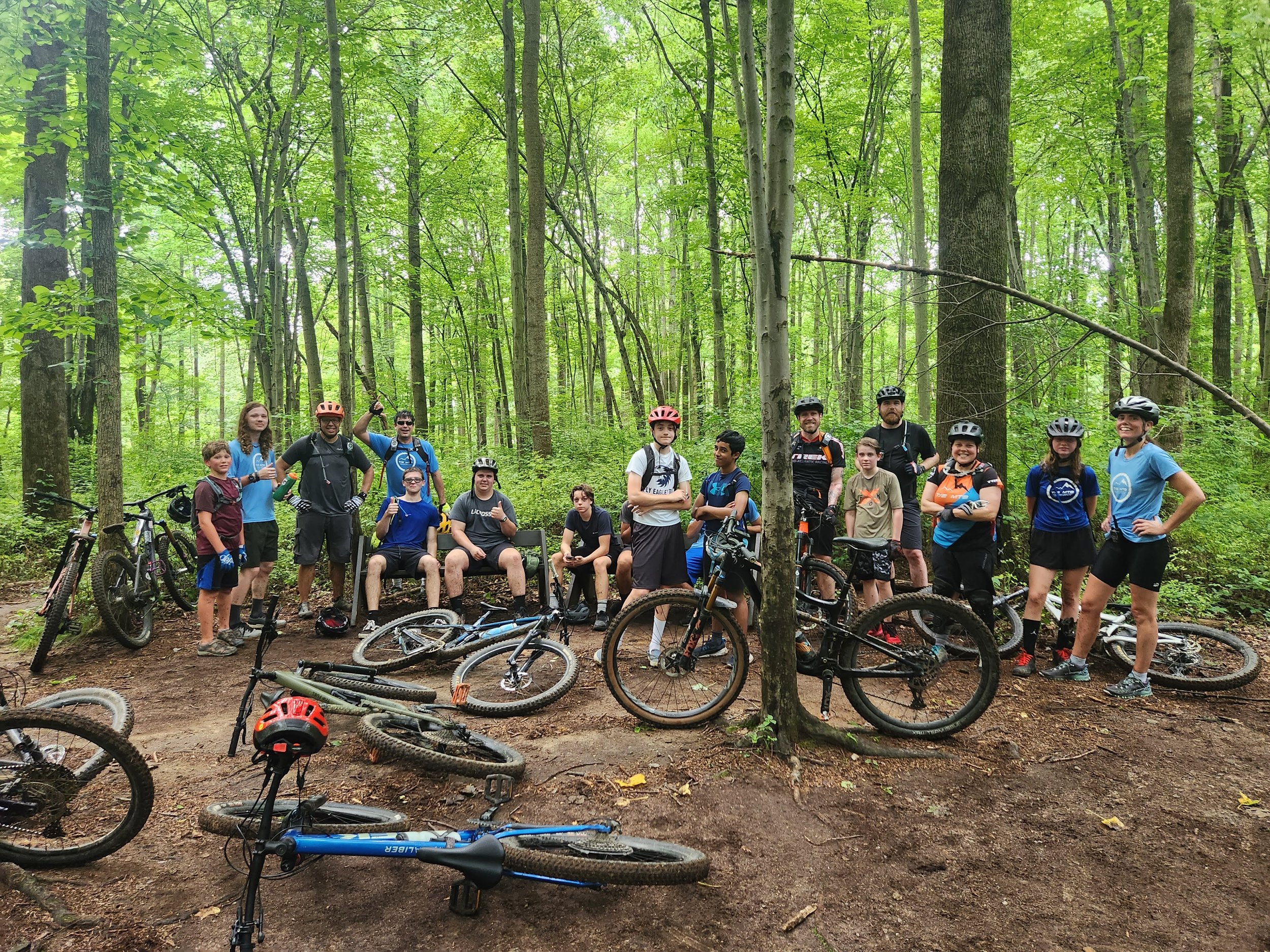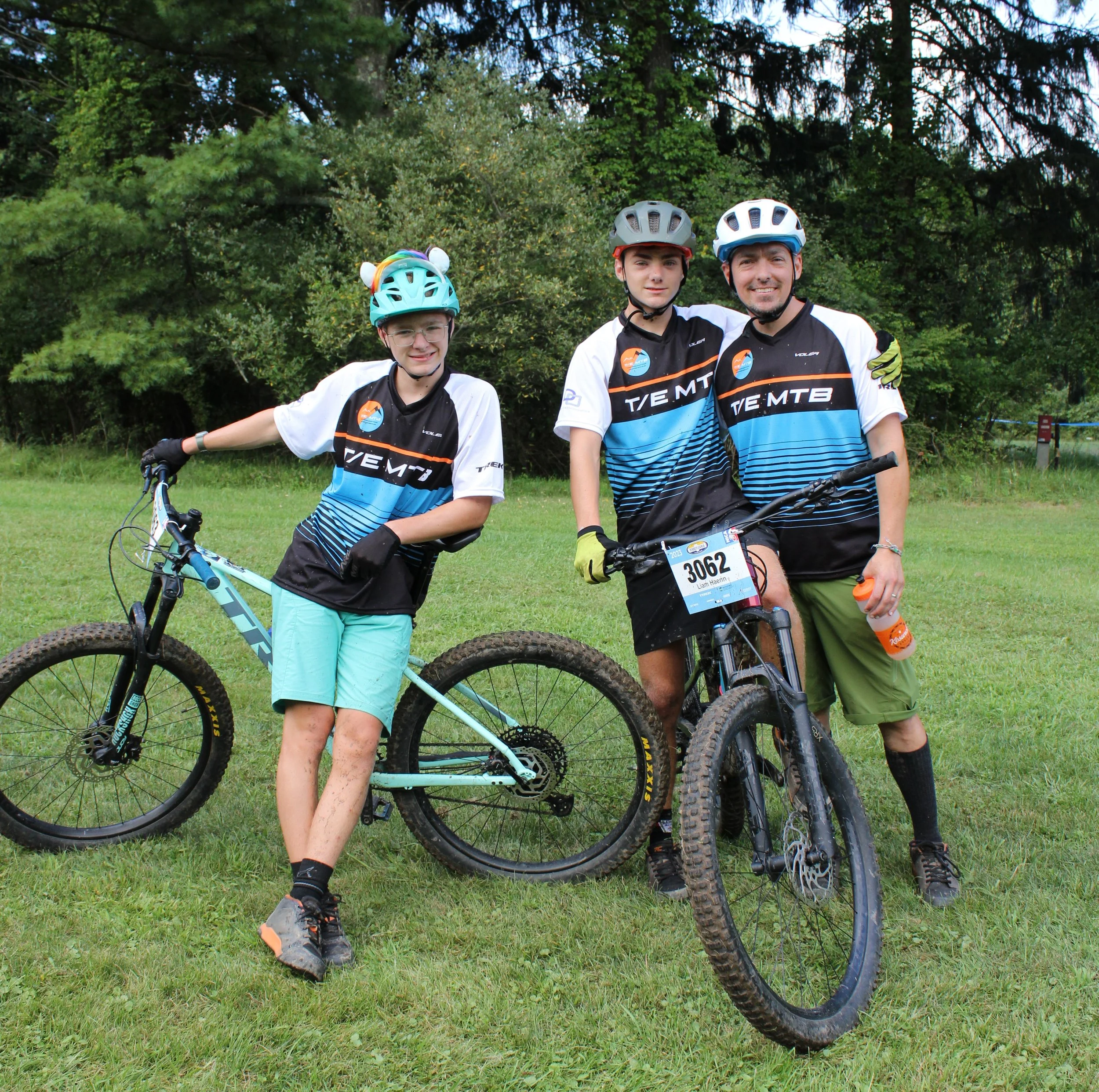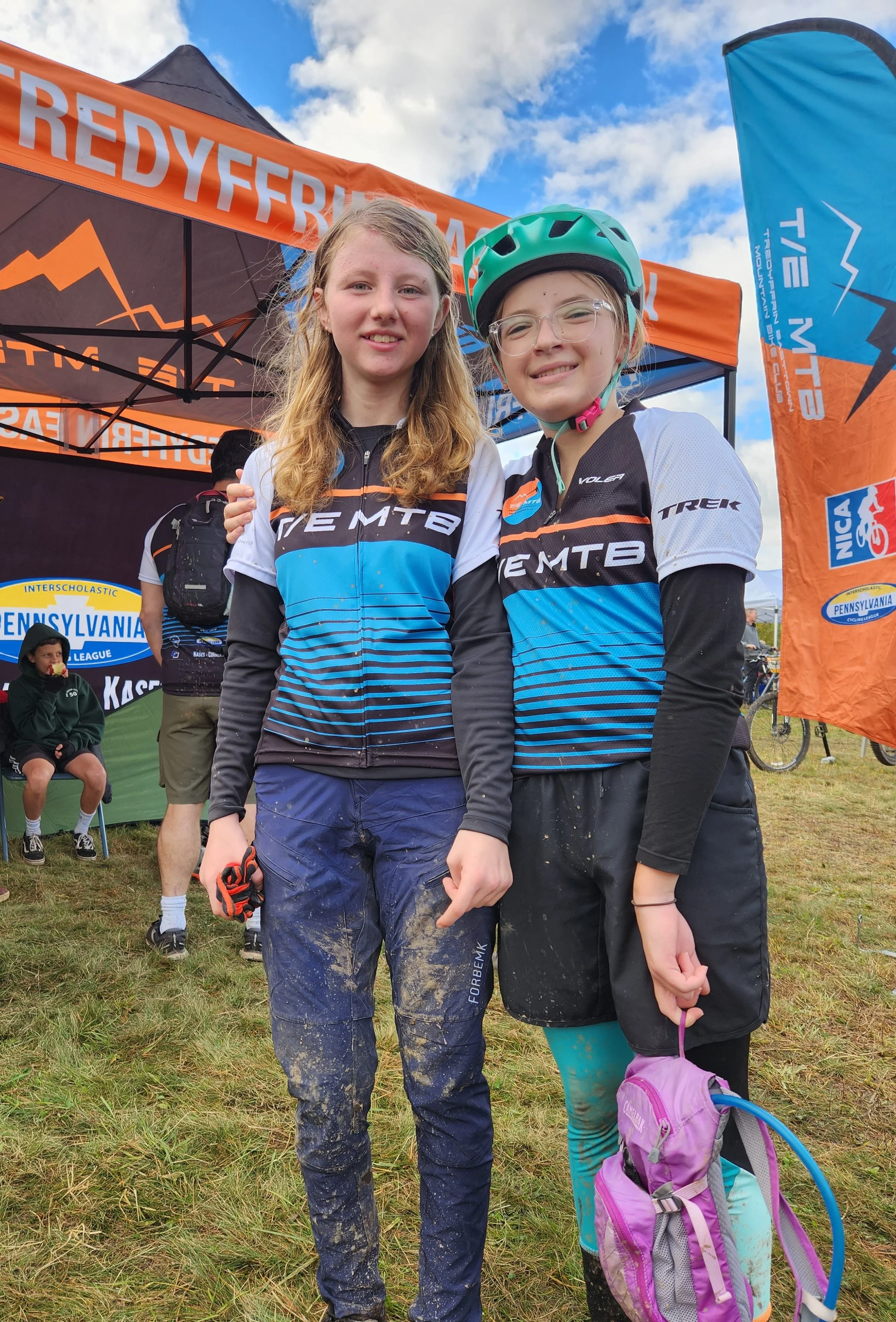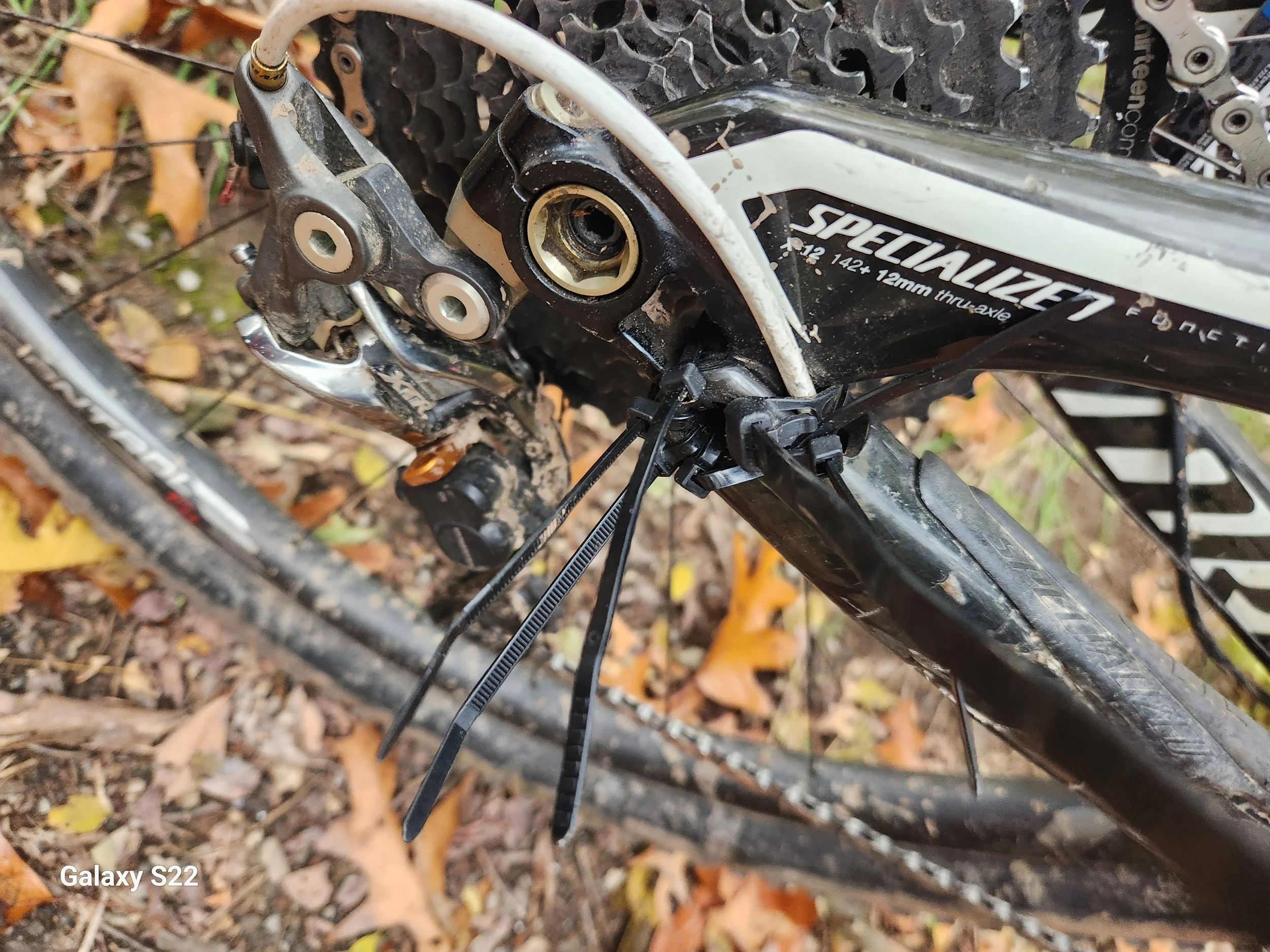
RIDER RESOURCES
TEMTB Riders Must Know…
Below is the minimum technical information all TEMTB riders must know. To the extent there is more good information to know on a topic, we have embedded links to more detailed information within the page. Our expectation is that TEMTB team members visit this page regularly and make sure you know everything on it. This page is a work in progress and will be developed further as we identify more information you need to know.
TEMTB Team Rules
-
Sportsmanship
You represent our school and cycling in general. Display sportsmanship during all activities. Treat teammates, coaches, spectators, and officials with fair play and respect. Large groups of student-athletes on the trail can be imposing to other users. Being considerate of others will assure a unified team.
-
Safety
Scholastic Mountain Biking is not an extreme sport. Practices and racing are fun and fast, but must be within the limits of the athlete. Coaches will focus on teaching safety and skills. Taking risks beyond your ability will not be tolerated. Safe speeds are relative to terrain and experience level. You must be able to stop safely within the distance that you can see ahead.
-
Respect
Ride only on authorized trails. Never ride on muddy trails. Pass with care and let others know of your presence well in advance. Pedestrians with pets on leashes have the right of way. Be especially careful when passing a horse. Sometimes it may necessary to dismount and get off the trail to allow others to pass. Headphones/earbuds are not allowed.
-
Helmets
Helmets are required at all times when riding.Under no circumstances will a student be on their bike without a fastened helmet. TEMTB team members will set the example for following this rule.
-
Service & Volunteering
Each member is expected to fully participate in service projects and to enroll family and friends as volunteers for race day or other support. Our team is dependent on volunteers.
-
Practice Groups
We practice in training groups to accommodate and help riders of all levels to develop. It is expected that all riders stay in their assigned group and give a best effort within your assigned ride group at each practice.
-
Bicycles & Maintenance
Riders are expected to come to practice and races with a functioning and properly maintained bicycle. Bike problems on the trail such as flats are a normal part of riding and coaches will be teaching basic bike maintenance skills throughout the season. Riders will be expected to learn and perform basic on-trail repairs. Riders are responsible for the condition and safety of their own bicycles.
-
Injuries, Illnesses, Medical Conditions
Any condition that would affect your ability to safely ride a bicycle must be reported. It is parents’ responsibility to report any conditions or injuries to the coach. An injury may require medical release as determined by the coach.
-
Concussions
Any reported possible concussions will require medical release before returning to practice. We take concussions very seriously. Every Coach undergoes CDC Concussion training annually.
Ride Etiquette
Ride Predictably
Pull off the trail to stop. Don’t stop in the middle of the trail. Cyclists yield to all other non-motorized trail users.
ALWAYS Dismount for Horses (both feet on the ground). Ask the horse rider how you should proceed.
Don’t force pedestrians to step off the trail for you to ride by. Either dismount or ride by slowly allowing them to stay on the trail.
Represent Well
Always let people know you are coming from behind. A friendly greeting such as "passing on your left" or ringing a bell are two good methods.
Say hello to everyone. Be friendly because you represent every cyclist.
“Good morning!”, “Beautiful Dog!”, “Beautiful Day!”, “Thank you”
Enjoy the Ride
Bicyclists traveling downhill should yield to riders climbing uphill, unless the trail is clearly signed for one-way or downhill-only traffic.
Be an Ambassador for our sport! – Follow the rules and speak up when others don’t.
Nutrition
All riders should properly fuel their bodies prior to practice and races. Riding at intensity for 1 hour can burn over 600 calories. Riders should have eaten a meal within the 3 hour prior to practice and should have some amount of quickly digestible food with them to eat during longer rides. We ride in groups on longer rides and obviously, we cannot leave any riders behind. If a rider is not properly fueled for the ride and cannot keep up with the group for this reason, the entire group's workout is impacted.
Essential Equipment
Each rider should come prepared with:
Helmet - Clean & unmarked for easy inspection in the event of a crash
Cycling Gloves - greatly increase riders ability to hold on to the handle bars
Eye Protection - clear lenses
Spare tube (that matches their bike tire size - typically, 27.5” or 29")
Tire levers & tire pump or CO2
Biking specific multi tool
Small bike pump either carried on the rider or mounted to the frame
Water bottles (x2) or hydration pack - filled with WATER
Food to consume during the ride. Typically, 200 calories per hour of riding
Clothing appropriate for the anticipated weather conditions
Bike Maintenance
Performing regular maintenance on your bike will save you money over the long term. Here are a few areas that require maintenance...
Clean your bike regularly, especially your drivetrain. Dirt in your chain causes the chain to wear more quickly than when it is clean and lubricated.
Chain life monitoring - Chains are manufactured with precision to a very fine tolerance. General use wears them out and over time they no longer hold the shape needed to perform properly. Continuing to use a worn down chain actually wears down your components and over time, they become incompatible with a new chain. It is much cheaper to replace a $30 chain every 400 miles than an entire drivetrain (chain, cog and cassette $150+) every 1,000 miles. If you don't know how to measure your chain wear, ask your coach.
Check for loose parts every time you ride by checking the ABC’s:
Air pressure (tires)
Brakes
Chain
Drivetrain
Everything else
Bouncing on your bike can be a quick way to check for issues. If you do this regularly, you will recognize the sound your bike makes and ultimately recognize changes in that sound, helping identify loose parts. Fixing loose parts before they fall off can avoid damage and replacement costs.
Required Skills for Common Mechanical Issues
Fix a flat tire
Remount a dropped chain
Fix a broken chain
Remove a bent disc brake rotor or release a brake on a bent wheel (1 only!!!)
Straighten off / center handlebars
Global Mountain Biking Network has a great collection of helpful videos.
Group Rides & Rules
Minimum 3 athletes to 1 coach ratio = 6 athletes & 2 coaches. Complications that may occur will require 2 or more Coaches/Parents to handle. In closed loop areas, radios can be used to facilitate 1 coach to a student group process.
Always have the first and the last athlete in eyesight.
Athletes are equally responsible for keeping the group together. Athletes always need to know where their group’s coaches are.
Regroup regularly. Coaches should agree to a regrouping frequency.
Stop at every trail intersection when people don’t know the trail to ensure the group stays together.
If you are waiting frequently for slower athletes, practice technical skills or hill repeats.
It is not a race. We all have a tendency to start out fast, then settle in to our workout. Make a conscious effort to start slow and warmup.
Safety of team members and the community is paramount. We want to create a culture where everyone speaks up if they see activities or behaviors that put others at risk for injury. Expressing concerns to peers can be uncomfortable, but we want riders to work past this and speak up. Coaches will emulate this behavior.
No drafting on multi use trails. Speeds must be under 10 mph when passing pedestrians on multi use trails.
Rides are not races. Respect everyone’s right to enjoy the trail you are on (i.e., dog walkers, equestrians, hikers/runners, etc.)
If a rider is uncomfortable with a specific trail section, we encourage them to walk that section or scout it out on foot before attempting to ride it. Other riders should give each person the space and time needed to navigate trails in a comfortable manner.

Tire Pressure
Formula for widths 2.0”-2.4”
( Rider Weight (R) + Complete Bike Weight (B) ) / 8 = X
Tubeless Tires
Front Tire = X -1 | Rear Tire = X + 2
Tires with Tubes
Front Tire = X + 9 | Rear Tire = X + 12
Example:
Rider weight 110 lbs, bike weight 31 lbs
Formula: (110 + 31) / 8 = 17.62
Tires with tubes should be:
Front: 17.6 + 9 = 26.6 PSI
Rear: 17.6 +12 = 29.6 PSI
Tubeless Tires should be:
Front: 17.6 - 1 = 16.6 PSI
Rear: 17.6 + 2 = 19.6 PSI
STRAVA
Strava is the social network for cyclists and athletes, bringing athletes together from all walks of life and inspire them to unlock their potential.
TEMTB has a group on Strava that aggregates all the activities of its members. This helps us coaches to see the rides and efforts of the student athletes beyond what is done in practice. Recording your rides on Strava gives coaches the ability better understand fitness levels, terrain ability and volumes of riding. This will allow us to better anticipate your needs at each practice.
Strava provides Apps for recording rides on both IOS and Android platforms. It also links any data gathered through other platforms like Garmin Connect. Strava does have an age restriction of 13 years old. Often middle school riders under the age of 13 function within an account set up and monitored by a parent. If you have any questions, please ask your coaches.
Resources
Trail Maintenance List - What to Bring
Helpful Videos
Tires & Tubes
Drivetrain
Shimano rear derailleur adjustment
SRAM rear derailleur adjustment
Suspension
Bike Fit




